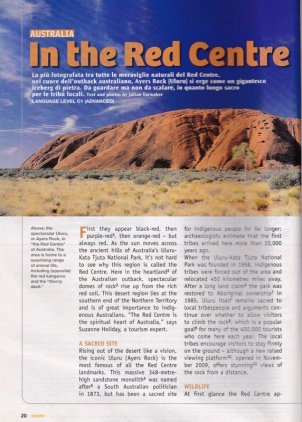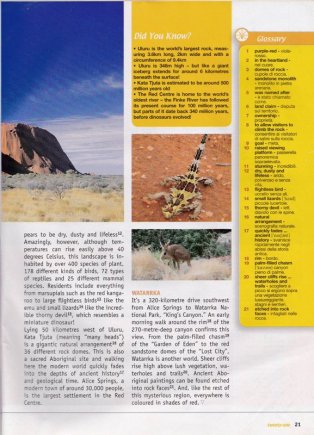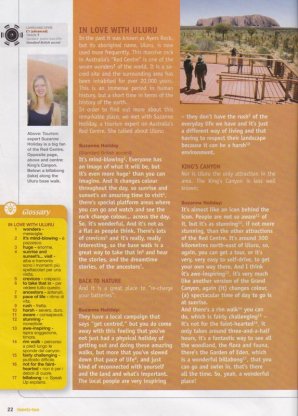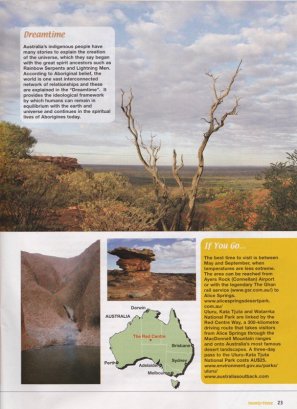'Morning, 'Afternoon, 'Evening,
where are Aussies from?
Fascinating country, like all the ones where English is spoken; wherever they are, they make you feel at home.
But we also feel such a strong attraction by the origins of these countries, we wonder what they were like before speaking English and what there can be preserved, protected.
That's why you have here some material about places in Aussie we would like you to comment.
If you have photographs of the "civilized" Australia, you can upload them in the Gallery with a comment and a message here.
Have you ever visited Aussie? When did you go there? What are your memories of your experience? What have you enjoyed most?
Let us know, it will be a pleasure reading you. Do not forget to consult the Archive to find articles that interest you and upload a comment even there.
Enjoy your English.
Anna - Coordinator
Source: Speak Up, January 2010






Comments
I express my gratitude for your time and consideration. 2" takes home the prize of being her finest piece of work.
web site and be updated with the most up-to-date news posted here.
No story about Australian animals will be complete without crocodiles. In Australia is quite common to see an Emu. They are the second largest flightless bird in the world. Dingo is an Australian wild dog. Dingo regarded as a dangerous animal. Dingo has some features of a wolf as well as domestic dog.
Reality is quite different. Indigenous popolation in major cities in Australia is very small and it's hard to meet native Australians on the streets of Melbourne, Sidney.
The only things of aboriginal culture are artifacts like boomerangs, paintings and musical instruments which you can buy in suvenir shops. The reason why there is not much of aboriginal culture lies in the events back 1700's and continued until the mid 20th century. Shortly after colonisation, aboriginals were ruthlessly attacked by white colonizers on the southeast territories of Australia. Many of the Aboriginals died from diseases brought to Australia. Nowadays the elements of reconciliation with indigenous popolation are a very important part of the Australian political life.
Many of them had not yet 5 years.These children are known as the stolen generation.These children were removed from their natural families without notice.It was thought that aboriginal mother not resented this loss of. Children aborigines or the means(the result of marriages between whites and natives) were re-educated according to western tradition, they must be like whites. Many were taken in churches or in some institutions, some were adopted by white parents, lost their original name, they lost their identity. Many of them suffered physical and [censored]ual abuse. Food and living conditions were poor. They didn't receive a proper education and were expected future work as domestic servants or on farms.
RSS feed for comments to this post